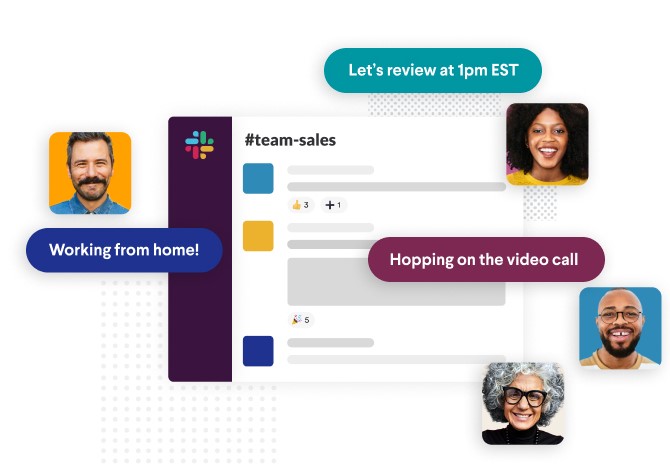Home | Business Advice | Business Columnists | Surviving During Uncertain Times
These are challenging times. New information is coming out on a daily basis. There is a good chance that the way you run your business today is not the way you were running it when the new year started. We asked our writers to create articles that help you run your business while maintaining your social distancing.
The coronavirus has forced countless businesses to reckon with major changes not only to their financial health, but also to day-to-day operations, including communication with employees and engagement with customers. Many have moved to completely remote work environments, while others still have to cope with social distancing measures. One silver lining to this crisis is that it came during an age when we have the technology and digital communication tools that are available today. Thankfully, many of these make it possible for businesses to continue operating efficiently at a time when uncertainty is the new norm.
Collaboration
Workplace collaboration tools, like Slack, Flock, Chanty, and the like, are great for keeping employees on task and in the loop. They provide a central hub for all work-related communication and let you set up designated areas for different teams, tasks, or topics. This can be incredibly helpful for a remote team as a digital replacement for the office.

Image via Slack.com
Features will vary, depending on the tool you choose, but those mentioned are rich with features and integrations that you are bound to find useful in more ways than one.
Most businesses had an email strategy of some kind before the pandemic, and this modern standard of communication is more important than ever.
Effective use of internal company email means sending regular updates about important information to the entire staff. It's a good idea to request confirmation from each person that they have read and understand the information within. This will help you keep employees accountable and ensure that everyone is on the same page. In some ways, email is more effective than an in-person conversation because it lives on in the inbox and can be searched and referred back to later.
Business owners should also utilize email to communicate with individual employees and/or teams to get updates on specific tasks and projects, provide guidance, and ask/answer questions. Employees should be encouraged to do the same amongst one another.
Email is, of course, a great way to reach customers, as well. You likely already have an email list that you were using for marketing purposes ahead of the coronavirus pandemic. Now, you can reach this list of customers and send regular updates, offer deals and promotions, and just keep them informed about your business in general. Just don't overdo it, because the recipients are likely getting a lot of similar emails from other businesses. You don't want to cause them to unsubscribe.
Instant Messages
Instant messages, regardless of which platform you use, are an invaluable tool for business communication. They are immensely helpful even from within an office environment as they allow you to have private, one-on-one conversations without having to get up from your desk and remove yourself from other tasks. If you are working from a remote work environment, where everyone is communicating with one another from their homes, it's easy to see where this would be useful. Encourage or require employees to use a common means of instant messages, and set specific hours where everyone needs to be available.
If you use a collaboration tool like those mentioned earlier, there will be an instant messaging platform built in.
Social Media
Use social media to post regular updates about how your company is handling the pandemic and to assure customers that you are still around and ready to serve them. Continue to adapt to your customers’ changing needs. Post deals and promotions, as well as engaging content that your followers will find interesting, useful, or otherwise valuable.
Facebook recently shared how six different businesses are getting creative with social media during the coronavirus pandemic. (1)
"As the owner of JesMarried, an online shop for one-of-a-kind custom illustrated wedding invitations and cards, Jes McGinley was used to creating ‘Save the Date’ cards. But with COVID-19 disrupting wedding plans, she knew that many stressed couples would be forced to postpone their events and would need a fast and easy way to let guests know," Facebook explained. "Jes designed a free 'Change the Date' PDF that couples could easily fill in with their own information. The PDF has been shared across Instagram and Facebook and has encouraged the postponement of weddings rather than outright cancellations, helping both couples and vendors."

Image via Instagram
This is a great example, not only of how a business is getting creative with social media, but also how a business is adjusting to the current landscape.
Employees should be encouraged to use social media responsibly and represent the brand positively. You may also consider setting up private, social groups for the company where employees can socialize. This can be good for building morale and camaraderie at a time when many people are feeling isolated. It can let employees get to know each other a little better beyond work-related tasks.
Video Conferencing
Video conferencing is another great method for both communicating with employees and engaging customers. Regardless of whether you use Zoom, Google Hangouts, Skype, or another option, video conferencing tools are great for having meetings when you can't be in the same place. You can also give talks/presentations and get feedback from your team. Team members can do the same and get feedback from you and co-workers. You can also use video conferencing to talk with partners, vendors, and others.
You can even use video conferencing tools to have one-on-one meetings with clients/customers without having to be in the same room, or you can give talks or presentations/webinars as part of your marketing efforts.
By now, you have most likely already made some major adjustments to your work set-up. At the same time, you may still be trying to get the hang of these changes and/or looking for ways to improve workflow and communication. Don't be intimidated by all of the digital tools that are available to you. Do some research and figure out which ones seem like a good fit for the way you work.
1. https://www.facebook.com/business/news/how-businesses-are-using-social-media-during-coronavirus/
